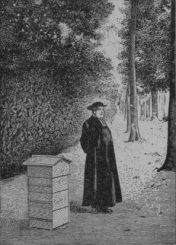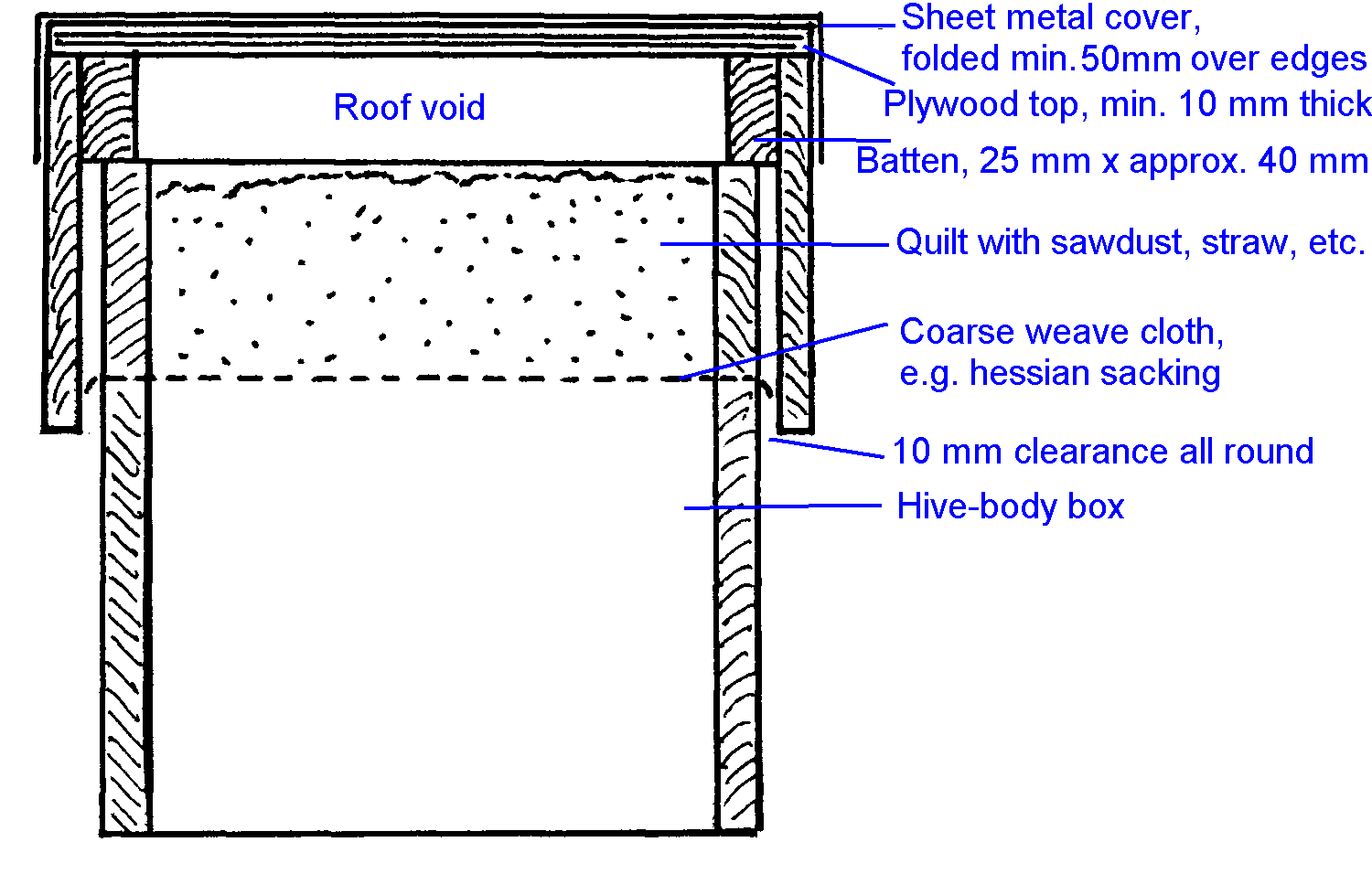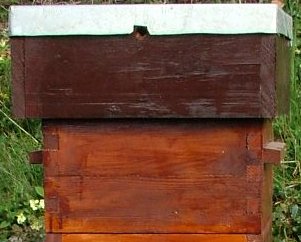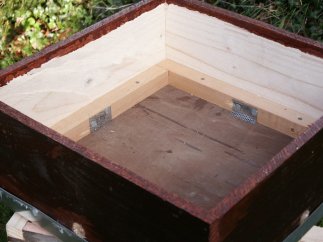
Warré plans
Warré methods
Warré modifications
Warré precursors
Groups / Fora
Google
e-group
Biobees.com
forum
Abbé Warré's book
Beekeeping for All:
For six experimental Warré hives ( http://www.dheaf.plus.com/warrebeekeeping/warre_experiment_heaf.htm ), David Heaf adapted the standard flat roof design of the British 'National' hive. It simply involved making it smaller as well as deep enough to give at least a 25 mm skirt extending below the junction of the quilt and the top hive-body box. However, it should not be so deep that it contacts the shutter of the window, if present.
This roof design works well in the climate of the British Isles. But as the total ventilation aperture is far smaller than that of a Warré gabled roof, it is questionable whether it would be sufficiently well ventilated in hot climates. Furthermore, as the roof void is not insulated and is well separated by the quilt from the warmth of the brood nest, it is possible that, at high temperate altitudes or in sub-tundra climates, water vapour could condense under the roof and eventually drain down through the quilt to the bees below.
Another issue about this roof is that it is covered with sheet metal. Using recycled old sheeting (aluminium, galvanised steel or copper etc.) overcomes the issue of sustainability of this high embodied energy material. However, there is the matter of whether it is entirely bee-friendly. On page 53 of Beekeeping For All Warré wrote 'I am not in favour of sheet metal. In rainy weather or hail it produces a sound sufficient to disturb the bees'.
The following diagram illustrates David Heaf's roof design. It is a flat box roof covered with sheet metal containing a void of at least 30 mm deep surrounded by four battens which rest on the top rim of the quilt and which are wide enough so as to retain closure of the void if the roof is displaced to one side. Sufficient play (circa 10 mm) is given for the skirt in order to ease removal and replacement. A hole of 25 mm diameter is drilled through the centre of the batten on each of the four sides, sloping upwards into the cavity from the outside to minimise ingress of driving rain. The inside of these holes is covered with metal mesh against insects etc. The roof projects at least 25 mm below the bottom of the quilt.



Towards
Sustainable Beekeeping
A compilation of a 4-part article serialised in The Beekeepers Quarterly
2008 with an introduction on beekeeping ethics.